RARE! WWII VII Fighter Command P-51 Mustang Pilot Palau Islands (Caroline Group) "Kneepocket" Flight Combat Map
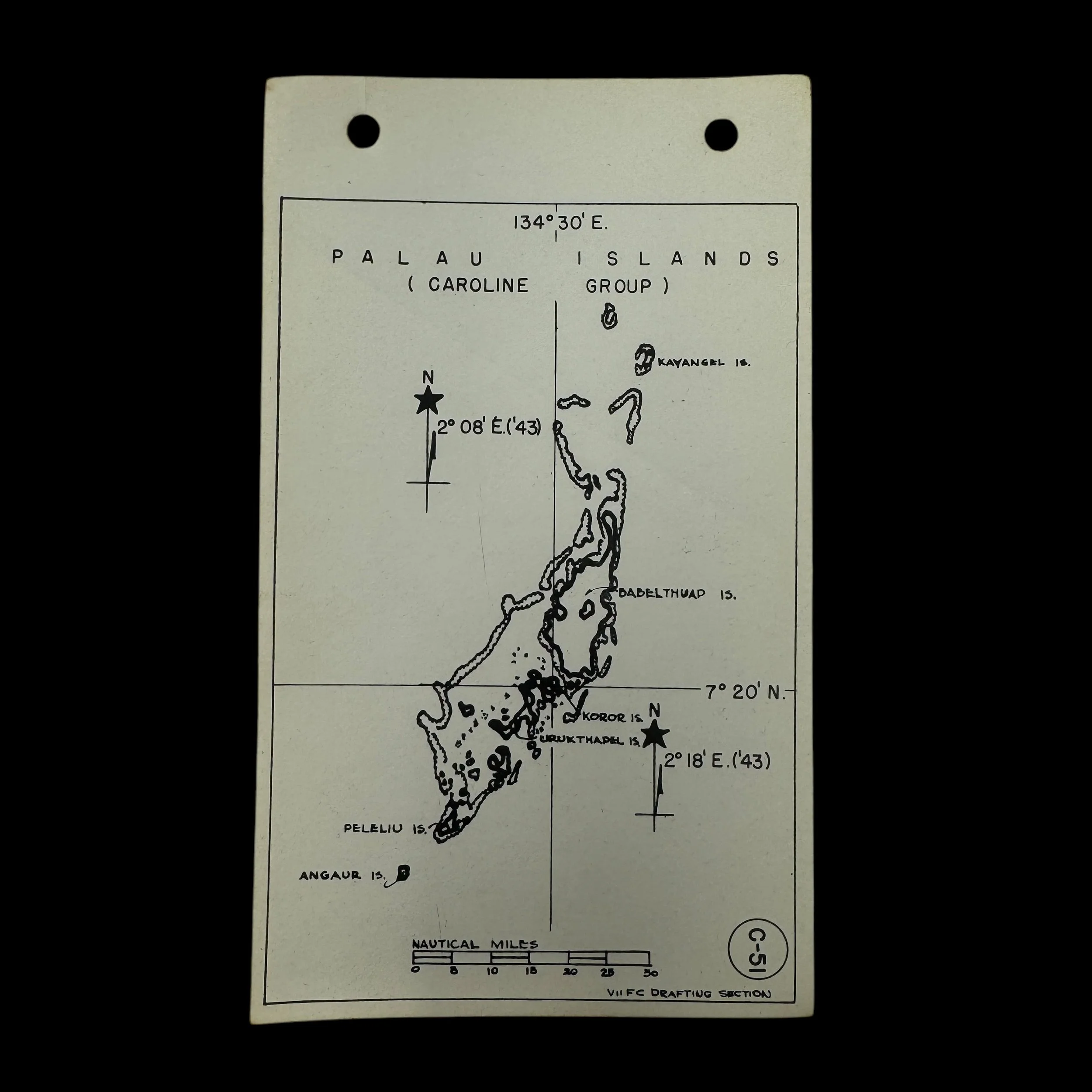

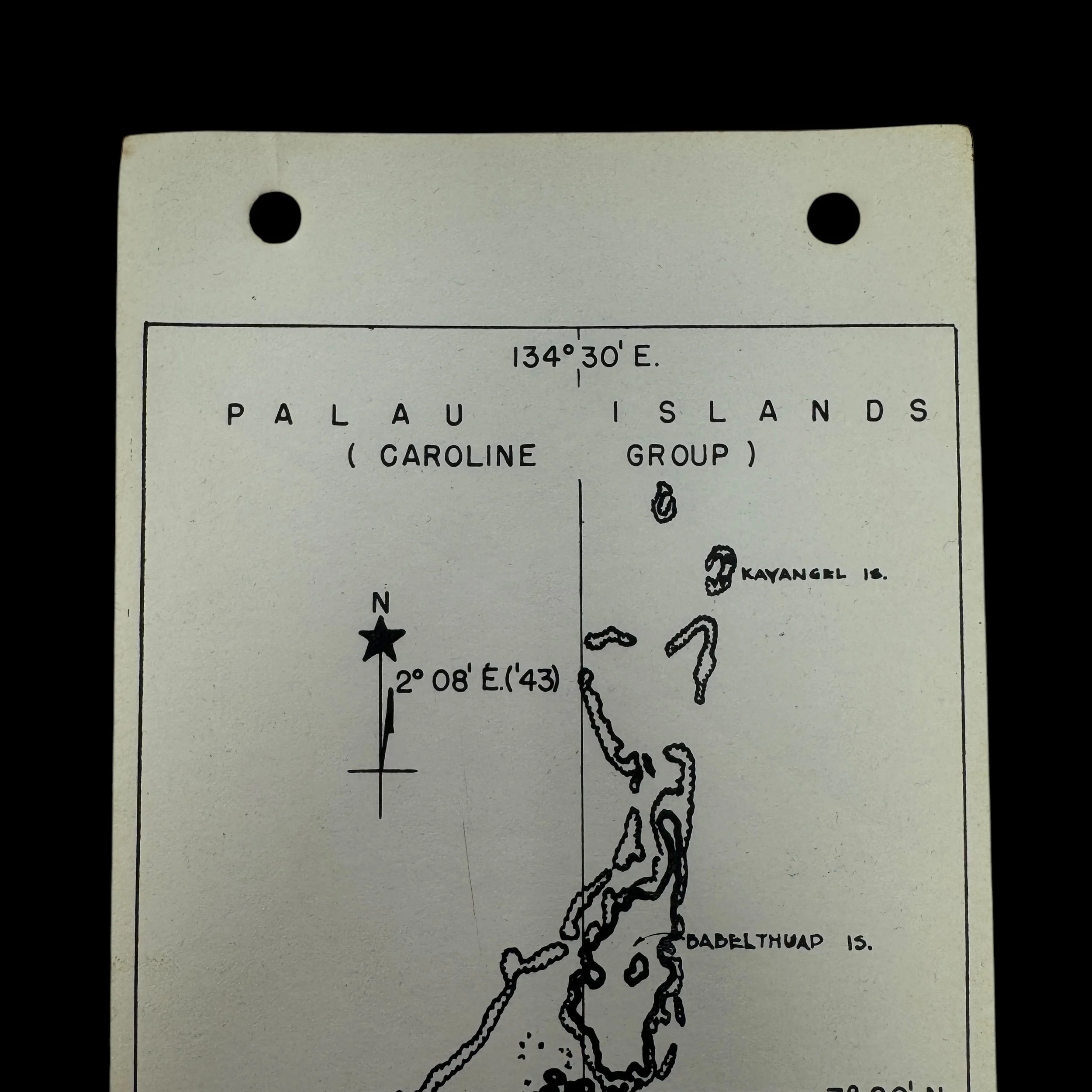
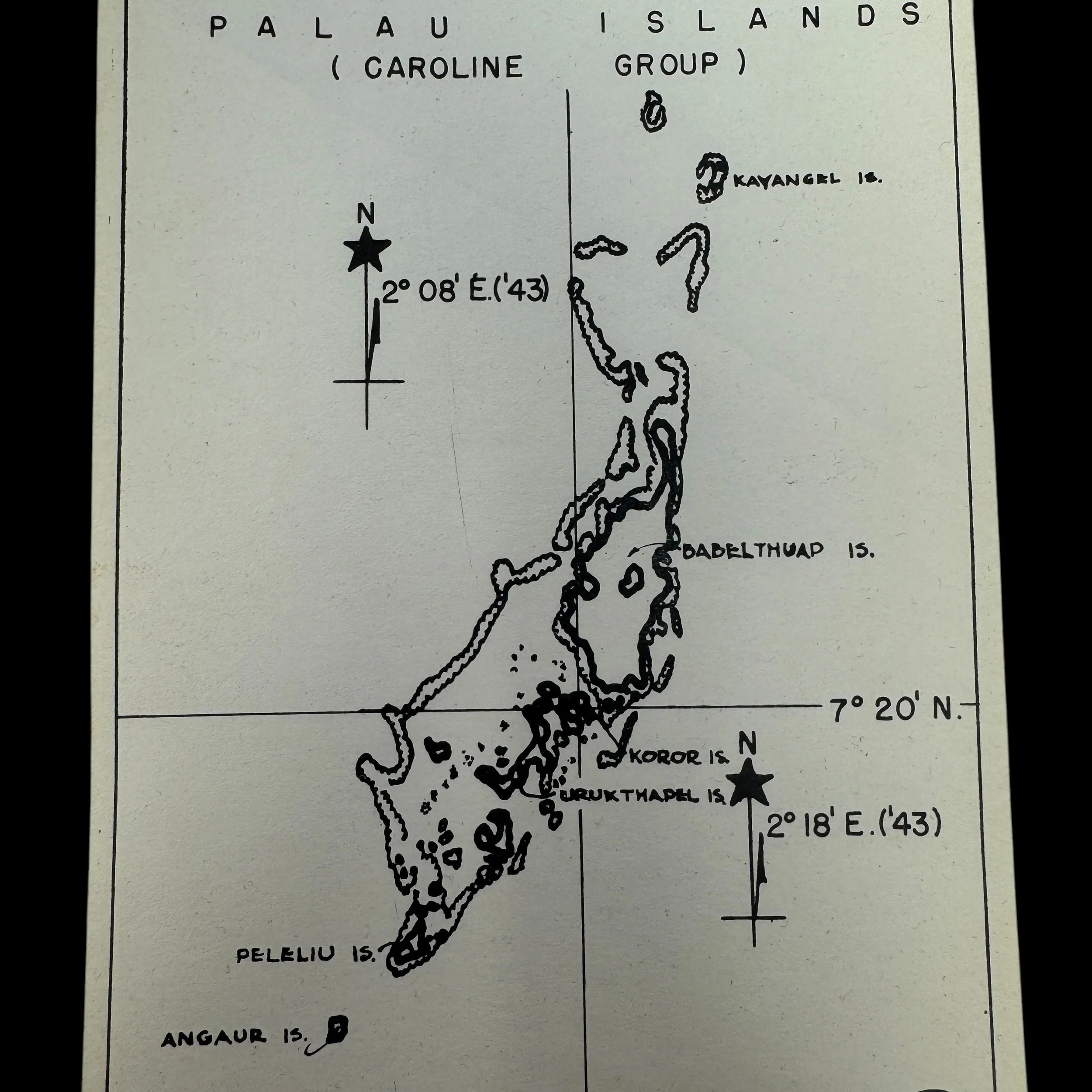
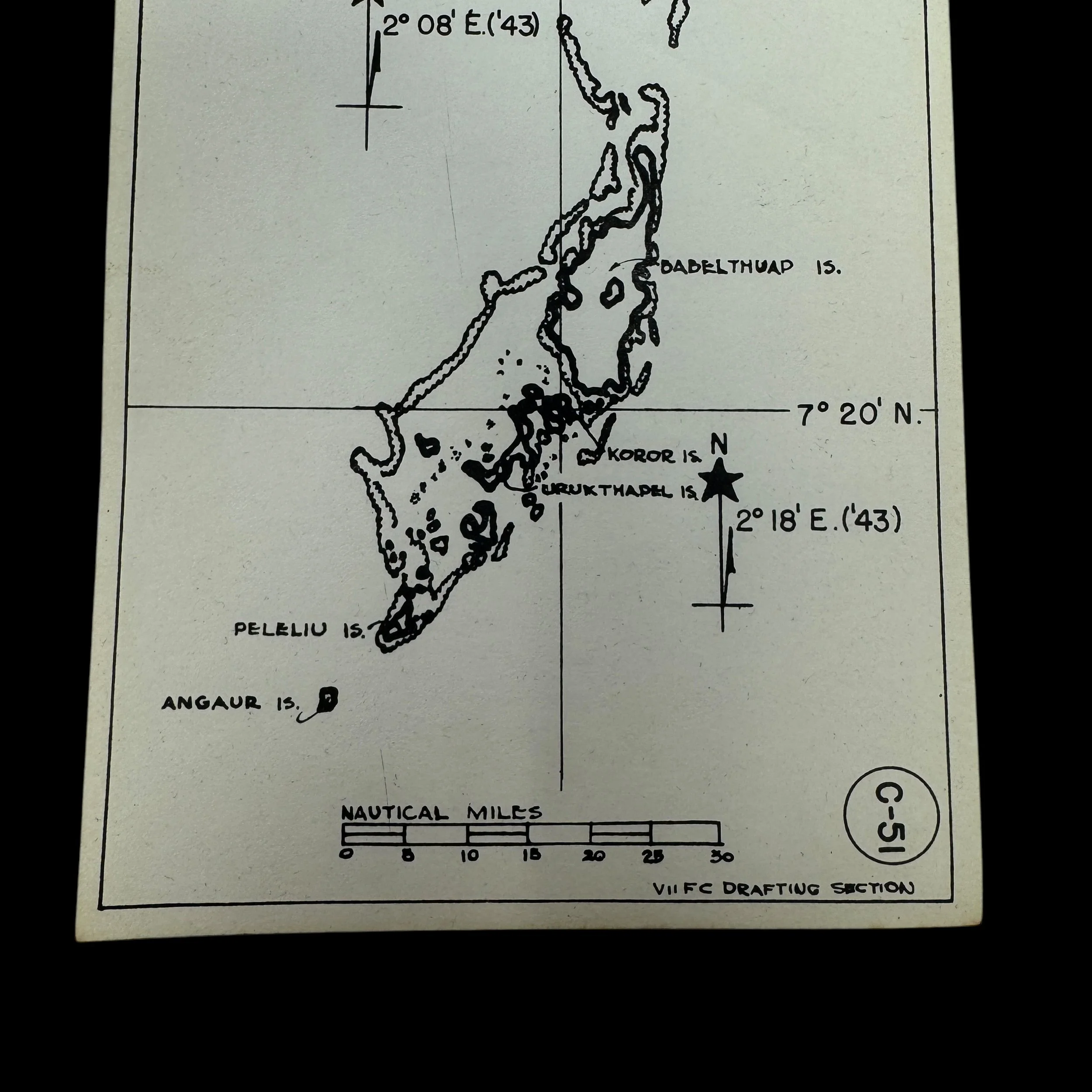
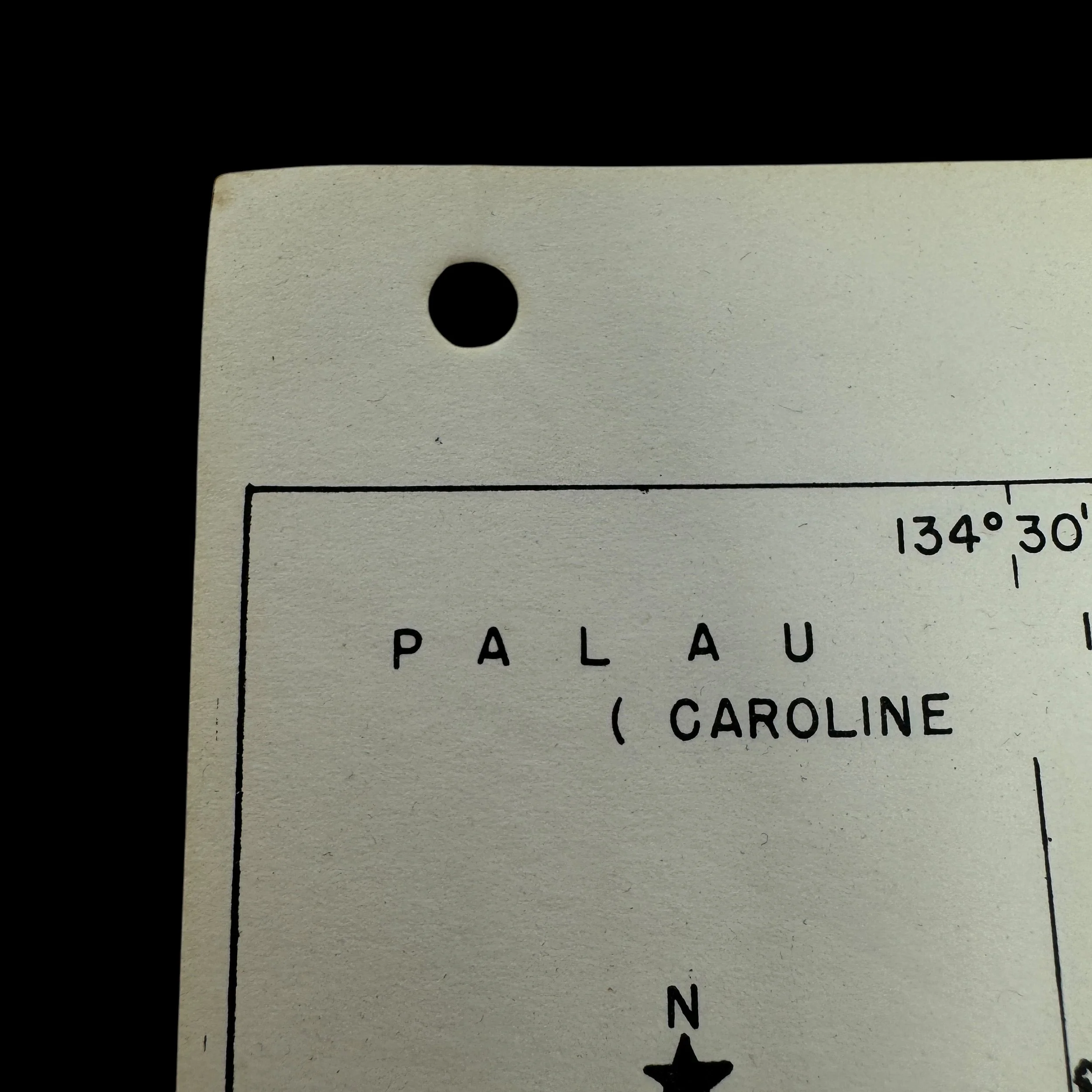
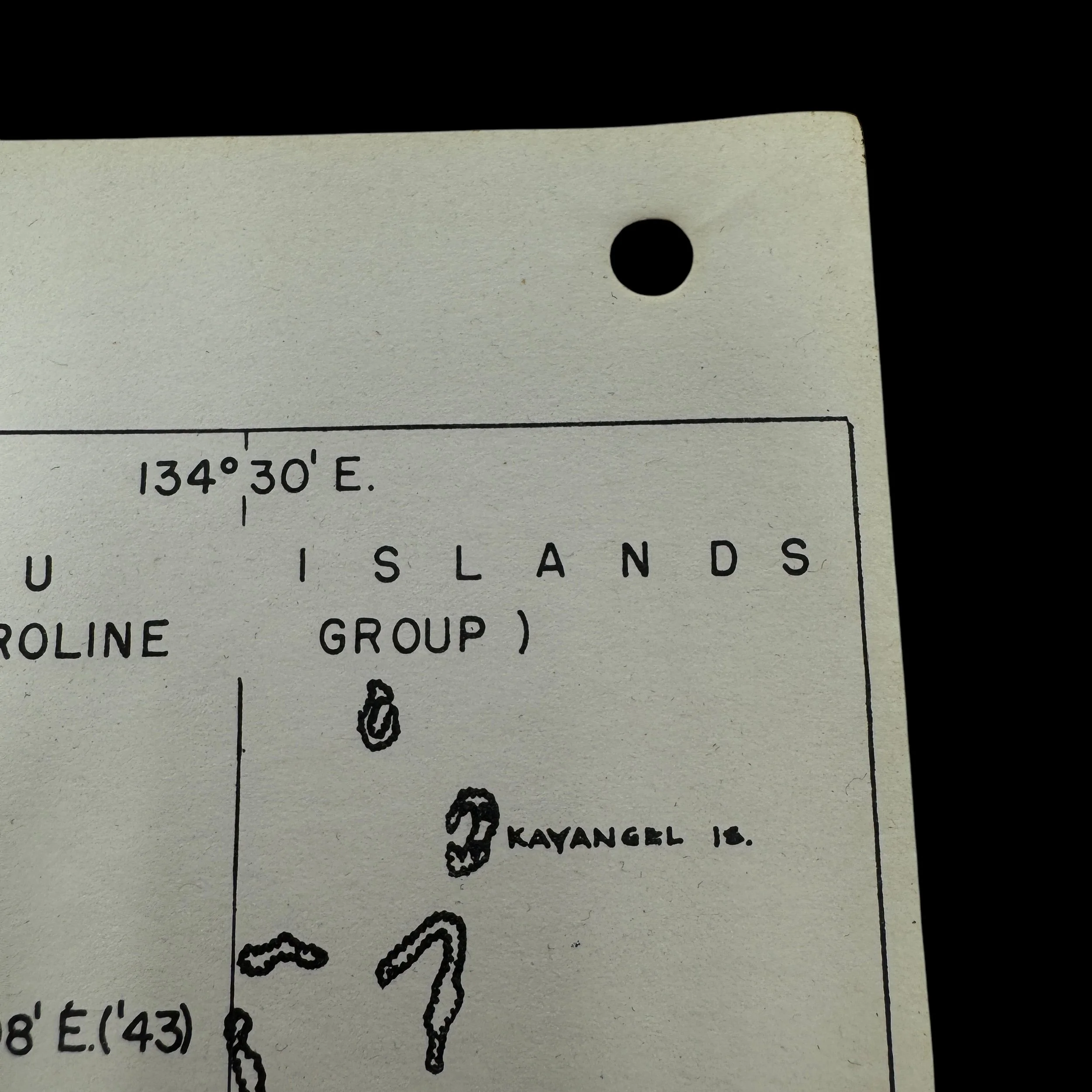
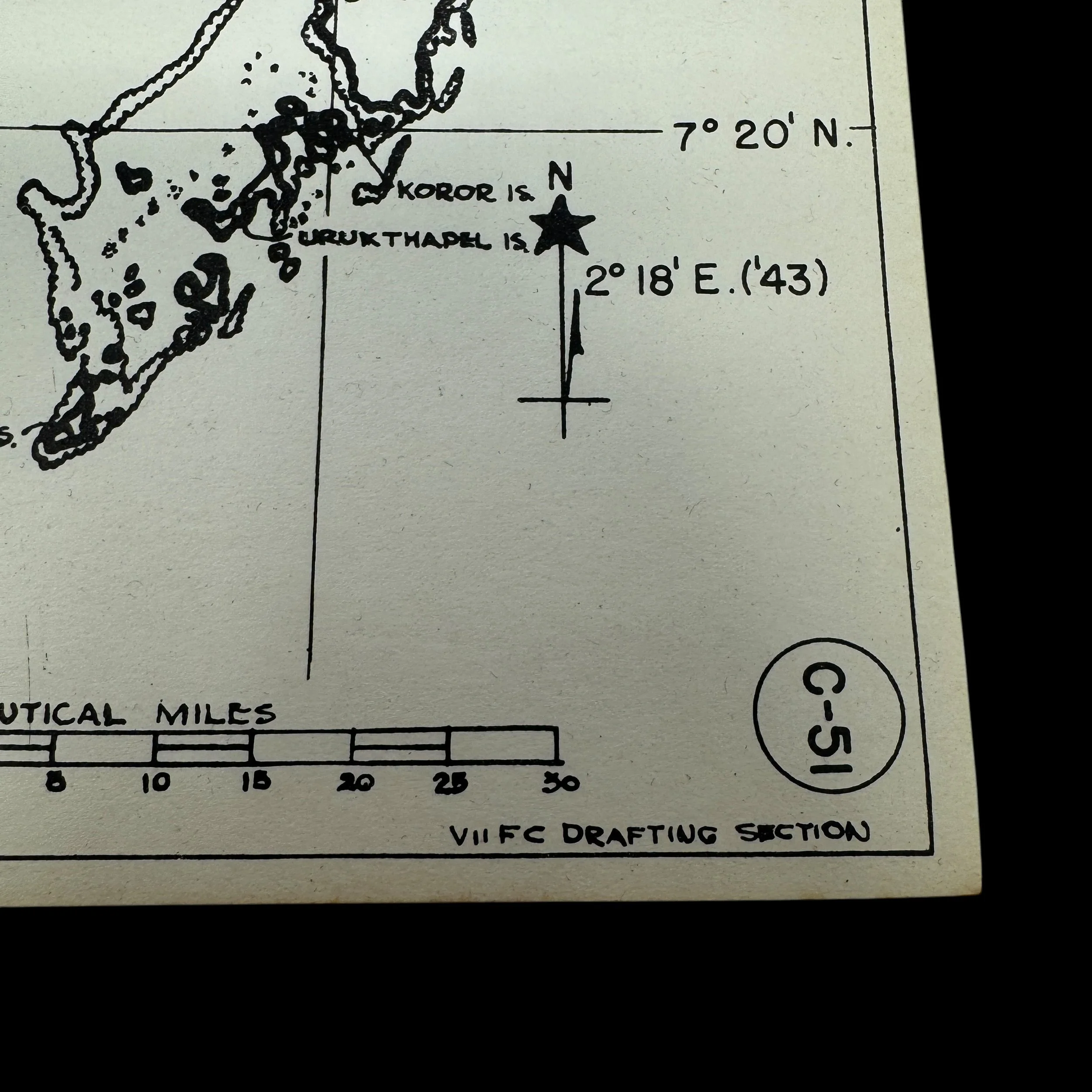
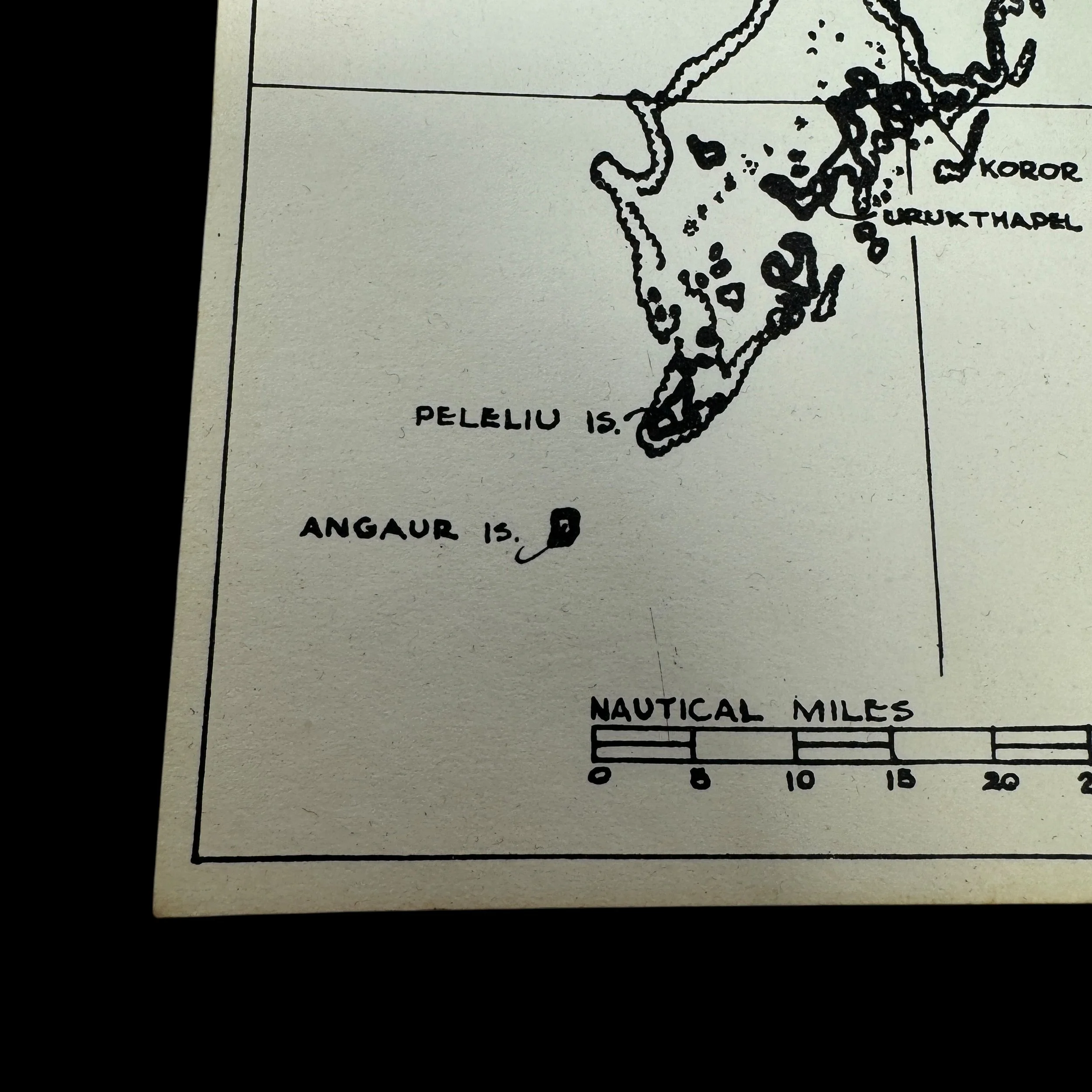
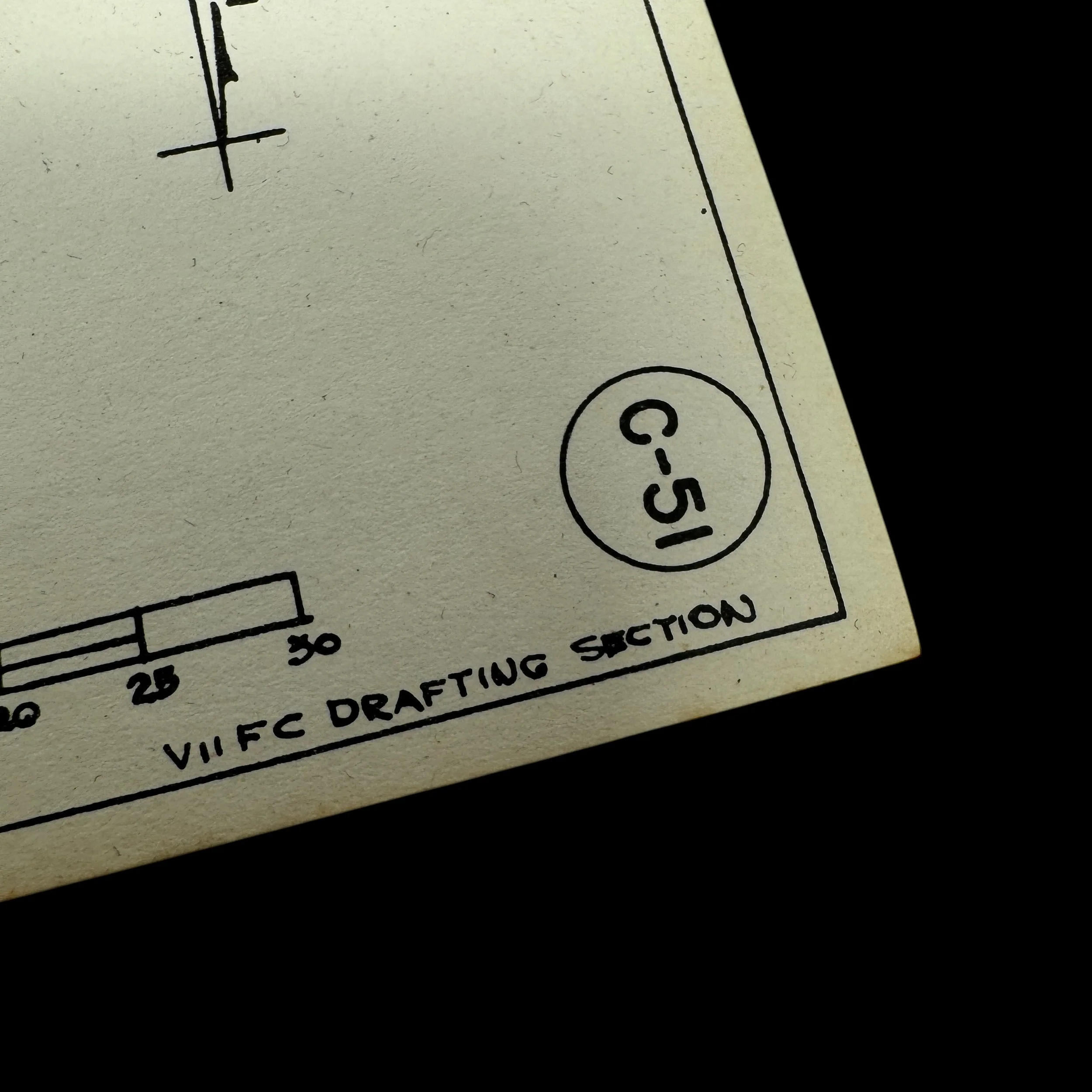
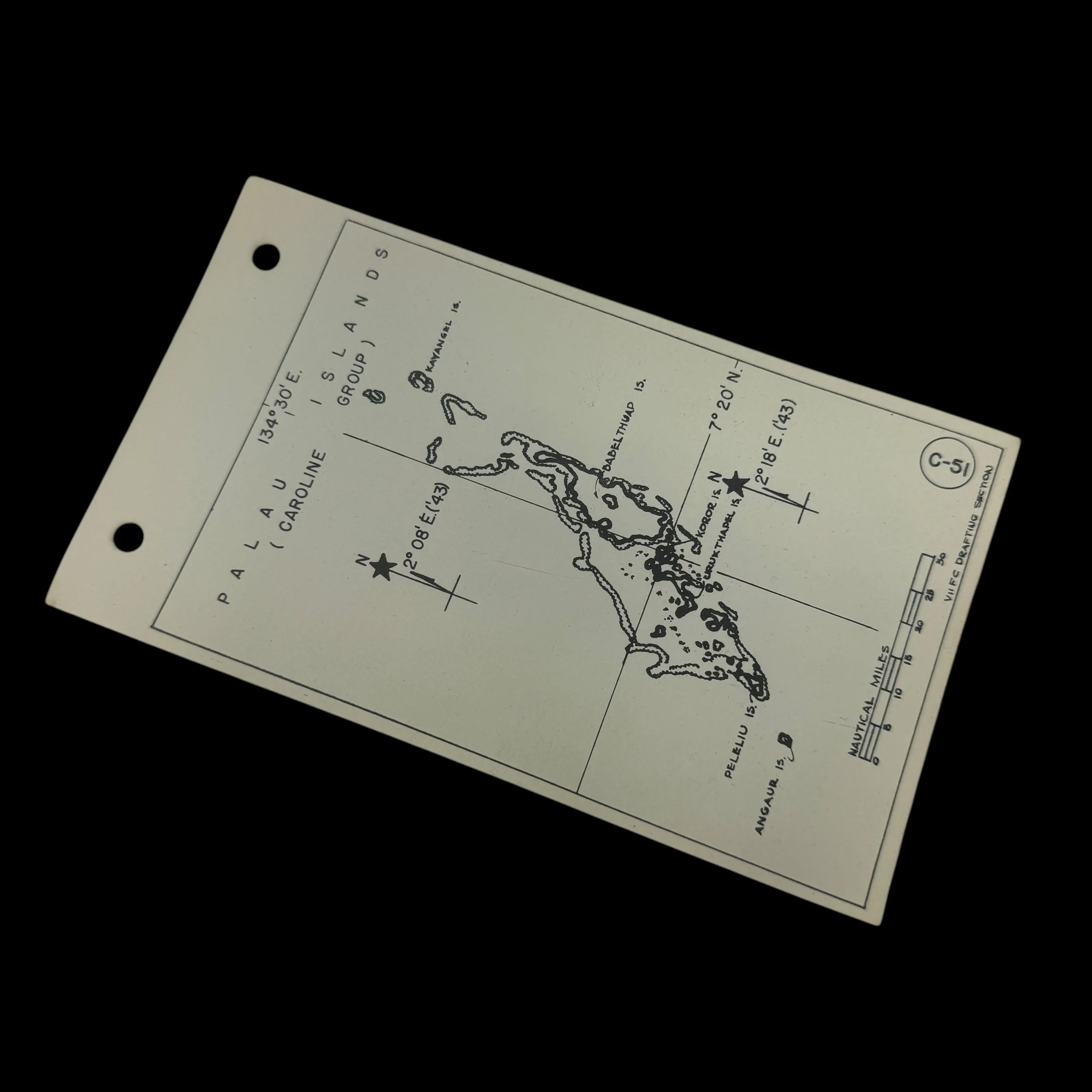
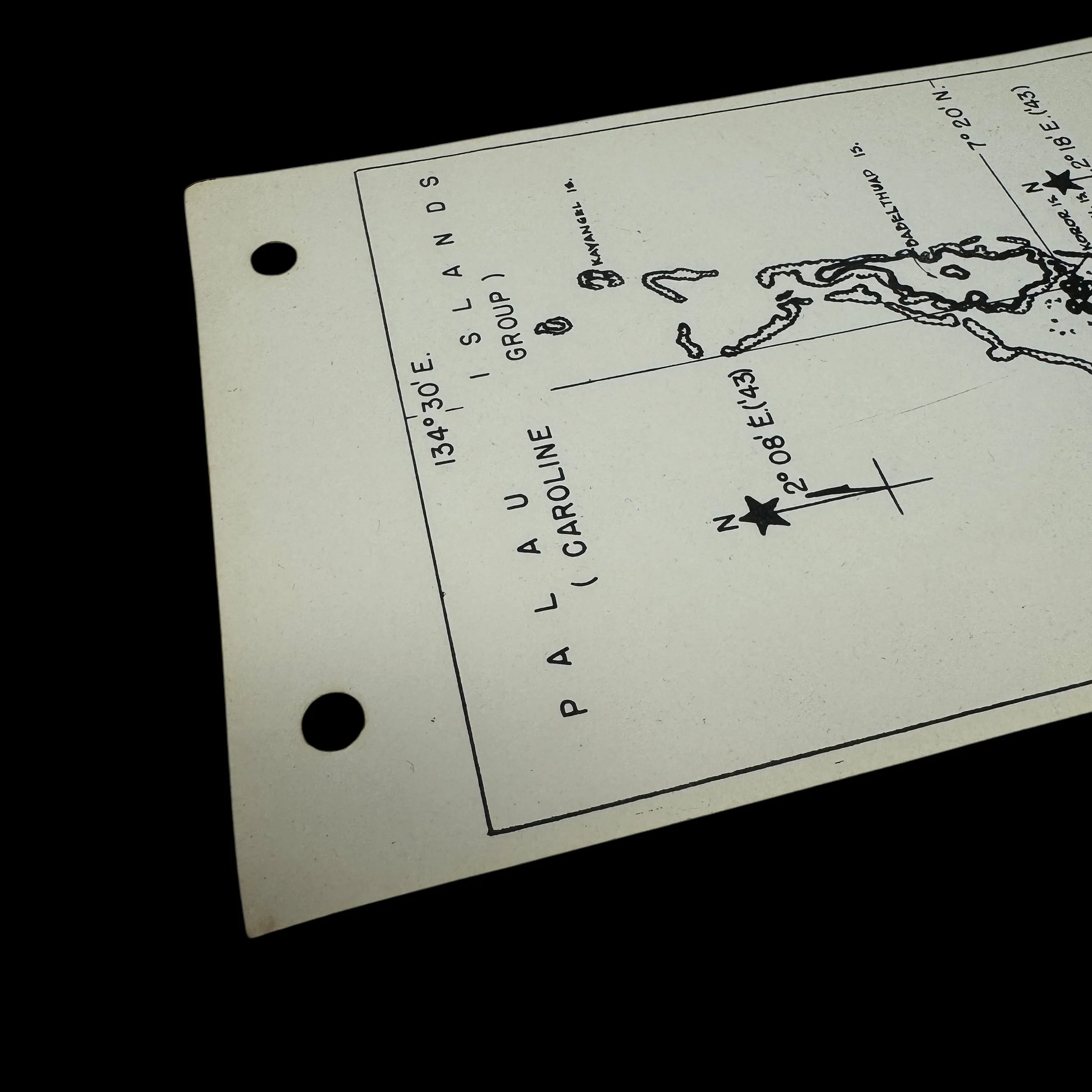
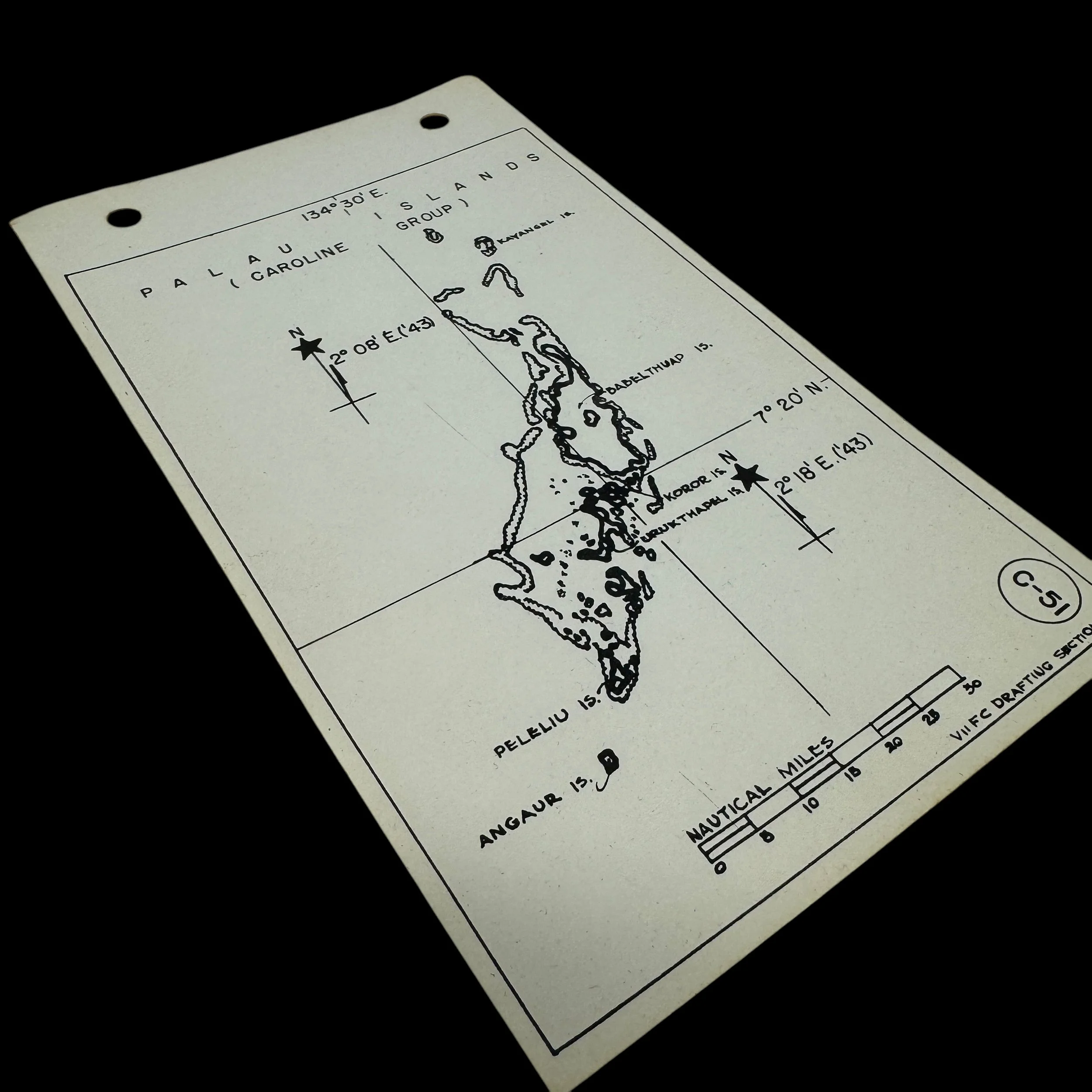

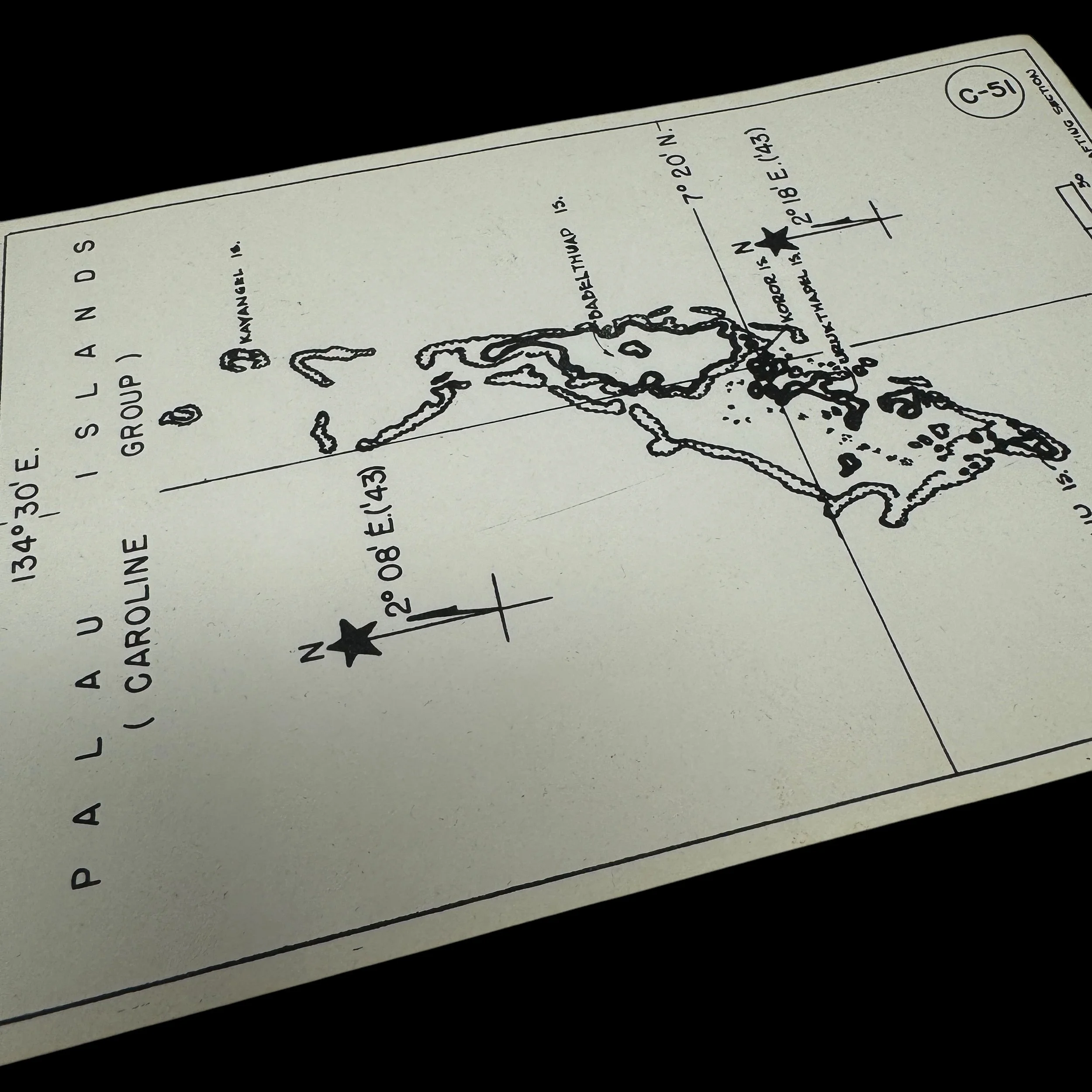








RARE! WWII VII Fighter Command P-51 Mustang Pilot Palau Islands (Caroline Group) "Kneepocket" Flight Combat Map
Comes with a hand-signed C.O.A.
“As part of the Seventh Air Force, the VII Fighter Command P-51 pilots were instrumental in securing U.S. air superiority, conducting long-range escort missions, and supporting the strategic bombing campaign against Japan. Their deployment in the Marianas Campaign was pivotal to the success of the island-hopping strategy and the eventual destruction of Japan’s war-making capabilities”
Type: Original World War II VII Fighter Command “Kneepocket" Flight Map Specially Made For P-51 Mustang Pilots of the Seventh Air Force’s VII Fighter Command
Titled: Palau Islands - Caroline Group
During World War II, the VII Fighter Command played a crucial role in the Central Pacific theater, particularly in operations surrounding the Palau Islands, including Angaur and Peleliu, from 1944 to 1945. Originally established to provide air defense for Hawaii, VII Fighter Command evolved into an aggressive combat organization tasked with escorting bombers, conducting long-range fighter sweeps, and neutralizing Japanese air power across strategic island groups. Following the capture of the Marianas, attention shifted toward the Palau Islands, a critical stepping stone for the planned invasion of the Philippines. P-51 Mustang pilots of the VII Fighter Command, flying the newly arrived long-range fighters, were at the forefront of these operations. Based from forward airfields in the Marianas and later Angaur, these pilots undertook daring escort missions for B-24 Liberators targeting Japanese installations on Peleliu, Babelthuap, Koror, and surrounding islands. They also performed aggressive fighter sweeps, engaging entrenched Japanese air units, suppressing enemy airfields, and providing tactical air support for ground forces battling the fierce Japanese defenses on Peleliu. The P-51s, with their superior range and speed, enabled VII Fighter Command to project air superiority deep into enemy territory, contributing significantly to the isolation of enemy garrisons and clearing the way for subsequent Allied operations in the Philippines and beyond. Their presence was critical not only in safeguarding bombers but also in ensuring that Japanese air units could not reinforce or resupply their isolated outposts, ultimately securing American dominance over the critical air and sea lanes of the western Pacific.
Size: 4 × 7 inches
This incredibly rare, museum-grade World War II artifact is an original combat map used by United States Army Air Forces (USAAF) pilots from the Pacific Theater's VII Fighter Command. Known among pilots as the "kneepocket" map, this essential navigation tool was carried by all P-51 Mustang pilots on every combat mission during the war.
Designed and field-printed by the “VII Fighter Command Drafting Section”, this compact yet detailed map was tailored for the specific challenges faced during long-range escort and reconnaissance missions over the vast Pacific Ocean. It was designed to fit perfectly inside the large knee pocket of a P-51 pilot’s flight suit, ensuring easy access without interfering with cockpit controls during combat missions.
The kneepocket map was vital during missions, whether escorting B-29 Superfortresses on Very Long Range (VLR) bombing runs to Japan, or conducting fighter sweeps and reconnaissance. Pilots used this map while in the air to track their positions, coordinate formation movements, and record real-time intelligence on enemy activity and potential targets.
Additionally, the map played a crucial role in emergency planning, providing vital information about nearby islands for potential crash landings. In a theater where engine failure, damage from enemy fire, or fuel shortages posed constant threats, the kneepocket map could mean the difference between survival and being lost at sea.
As a field-produced document, each map was unique, and only a handful of examples with direct connections to the VII Fighter Command have survived, with most reserved for high-end museum archives. Today, these original VII Fighter Command combat maps are exceedingly rare artifacts of WWII aviation history.
Wings Over Palau: The VII Fighter Command and the P-51 Mustang Missions in the Battle for the Palau Islands, 1944–1945
During the final two years of World War II, the VII Fighter Command, a key operational arm of the United States Army Air Forces in the Pacific, played a crucial yet often underappreciated role in securing air superiority across the Central and Western Pacific. Originally tasked with the air defense of the Hawaiian Islands following the attack on Pearl Harbor, the VII Fighter Command underwent a transformation by mid-1944. As the Allied island-hopping campaign advanced toward Japan, the command transitioned into an offensive force, supporting major amphibious invasions and carrying out long-range fighter sweeps against entrenched Japanese forces. Now equipped with advanced long-range fighters like the P-51 Mustang, the VII Fighter Command became instrumental in combat operations around strategic strongholds such as the Palau Islands—including Angaur and Peleliu—during critical campaigns from 1944 to 1945.
The Palau Islands, located roughly 500 miles east of the Philippines, represented a vital stepping stone in the U.S. Pacific strategy. As part of Operation Stalemate II, American forces sought to seize key islands in Palau to establish airfields capable of supporting operations into the Philippines and eventually the Japanese home islands. Angaur and Peleliu, in particular, were fiercely defended by Japanese forces. To ensure success in the amphibious assaults and subsequent occupation of these islands, American commanders knew they would require overwhelming air superiority. It was within this context that the VII Fighter Command’s P-51 Mustang pilots assumed a critical and highly dangerous role.
Equipped with the newly introduced P-51D Mustang, a revolutionary aircraft known for its speed, range, and maneuverability, the fighter pilots of the VII Fighter Command were capable of reaching distant targets that had previously been out of operational range for earlier fighter models. The P-51’s capabilities allowed VII Fighter Command to conduct a variety of missions, including bomber escort, ground strafing runs, fighter sweeps, and close air support—all essential for neutralizing Japanese defenses on the Palau Islands.
The build-up to the Palau operations began in the summer of 1944. As part of preparations for the invasion, VII Fighter Command units were deployed forward, establishing advanced bases at captured or newly constructed airfields on islands such as Saipan and Guam in the Marianas. From these locations, they could reach the Palau Islands with the extended range afforded by auxiliary fuel tanks and the P-51’s natural endurance. Throughout August and early September 1944, VII Fighter Command pilots flew long-range reconnaissance and fighter sweep missions over Palau, conducting detailed photographic surveys and mapping Japanese defensive installations to aid invasion planners. These missions were grueling; the flights often stretched over hundreds of miles of open ocean, testing the limits of aircraft endurance and pilot navigation skills in an era before sophisticated onboard radar systems.
When the U.S. launched its amphibious assault on Peleliu on September 15, 1944, VII Fighter Command’s P-51s were in the sky, clearing the way. The Japanese garrison on Peleliu, deeply dug into a complex system of caves and fortifications, proved extremely resilient. To aid the Marines on the ground, the Mustang pilots conducted relentless close air support missions, delivering precision strafing runs and bombing attacks against Japanese positions. The P-51s would swoop down low over the rugged terrain, releasing bombs and pouring machine gun fire into bunkers, pillboxes, and suspected troop concentrations. Their efforts were critical in softening up enemy strongpoints and in disrupting Japanese counterattacks during the brutal, month-long battle for the island.
On neighboring Angaur, the operations were similarly intense. Although the island was smaller and more lightly defended than Peleliu, it nonetheless hosted a determined Japanese force. VII Fighter Command pilots flew repeated missions supporting U.S. Army ground forces as they fought to eliminate pockets of resistance. Importantly, Angaur’s capture allowed the construction of a major airfield that would soon serve as a staging point for B-24 Liberator bombers targeting the Philippines and beyond—a key strategic objective of the overall Palau campaign.
Beyond direct support of ground operations, VII Fighter Command’s P-51s performed air superiority missions to defend American naval forces offshore. Japanese air resistance in the Palau region, while weakened compared to earlier stages of the war, remained dangerous. Kamikaze tactics, increasingly common by late 1944, posed a particular threat to American carriers and transports during the invasion. VII Fighter Command pilots maintained combat air patrols over the fleet, intercepting and shooting down Japanese aircraft before they could reach their targets. Although the bulk of Japanese airpower had been crippled in earlier campaigns such as the Marianas Turkey Shoot, isolated units still mounted deadly attacks. The VII Fighter Command’s efforts helped ensure that these threats were largely neutralized before they could inflict serious damage on the invasion force.
The operational tempo for the P-51 pilots was relentless. Flying multiple sorties per day under the harsh tropical sun, often in weather conditions that deteriorated rapidly, they battled not only the enemy but also the elements. Mechanical failures, navigational errors, and the ever-present risk of ditching at sea were constant dangers. Pilots who went down often faced long waits for rescue in shark-infested waters or hostile territory. Yet the esprit de corps among VII Fighter Command’s Mustang pilots remained high, fueled by a clear understanding of the critical importance of their mission to the broader war effort.
As the Palau campaign wound down in late 1944, the VII Fighter Command shifted its focus further west, supporting operations in the Philippines and preparing for future offensives aimed at the Ryukyu Islands and, ultimately, Japan itself. The experience gained during the Palau operations—long-range navigation, close air support, bomber escort, and fleet defense—would prove invaluable in these subsequent, even larger campaigns.
In retrospect, the VII Fighter Command’s operations around the Palau Islands stand as a testament to the evolving nature of air power in the Pacific Theater. The Palau campaign demonstrated that fighter units, equipped with the right aircraft and trained for a broad range of missions, could project American airpower deep into enemy territory, supporting amphibious invasions, securing air superiority, and directly shaping the outcomes of ground battles. For the P-51 pilots of the VII Fighter Command, their contribution to the conquest of Angaur, Peleliu, and the surrounding islands represented both a triumph of individual courage and a milestone in the growing sophistication of Allied joint operations during World War II.